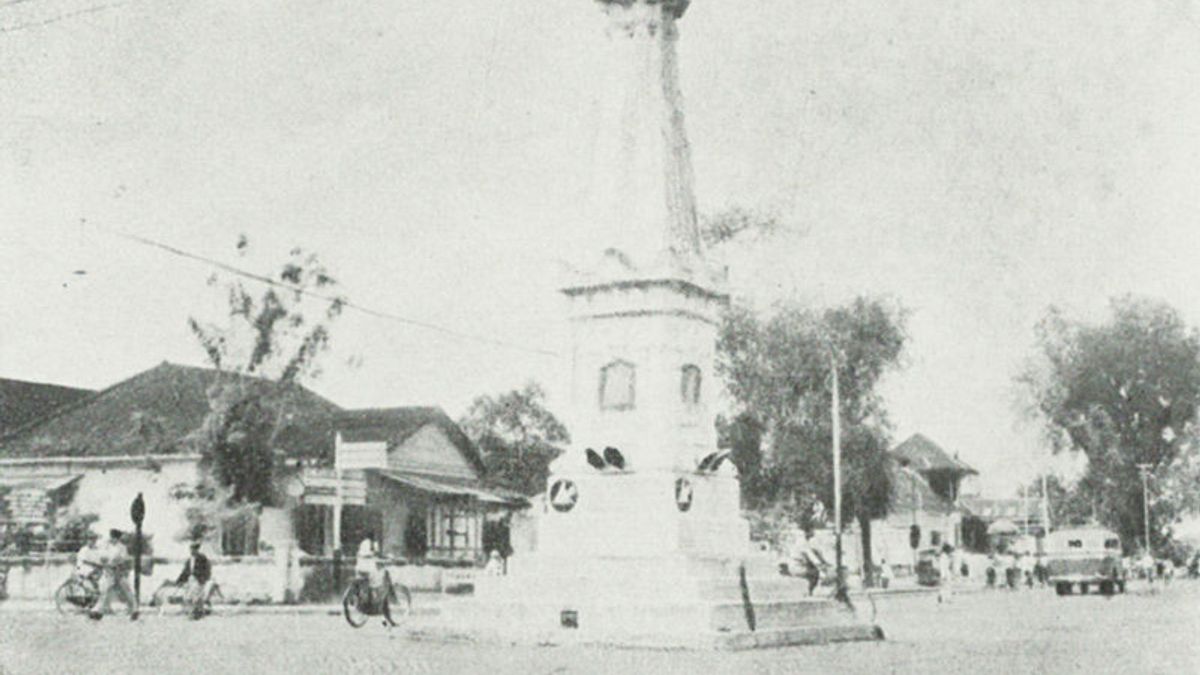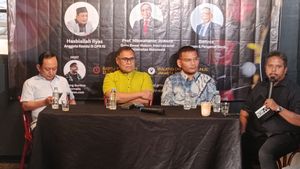JAKARTA – Today's history, 155 years ago, June 10, 1867, Yogyakarta was hit by a great earthquake. The earthquake had a magnitude of 8.0 on the Richter Scale (SR). The tremors of the earthquake that lasted for 70 seconds made Yogyakarta devastated. Thousands of people died and tens of thousands of homes were badly damaged.
The Golong Gilig Monument (now: the White Pal Monument) also collapsed. Moreover, the Yogyakarta earthquake was accompanied by the rumbling sound of moving buildings. Everyone in Yogyakarta knows it as the year of disaster.
The archipelago's "familiarity" with earthquakes is no secret. The archipelago has been prone to earthquakes since time immemorial. Travel records of world celebrities, such as the Lieutenant Governor of the Dutch East Indies, Thomas Stamford Raffles (1811-1816) and the Naturalist Alfred Russel Wallace are some of them. Raffles looked at many of the archipelago's temples which had collapsed due to the earthquake.
Wallace also has his own opinion. He mentioned that of the many places he had visited, the archipelago was the most earthquake-prone. Wallace observed this when he stepped into Manado, Celebes (Sulawesi) in 1858. According to him, the earthquake caused two things: fear and amusement.

On the one hand, Alfred saw the earthquake could kill the lives of many people. On the other hand, the local bumiputras regard the earthquake as a game that requires them to race out of the house quickly. However, that view was obtained by Wallace only in Celebes.
It would be different if Wallace – did not return to England – then felt the earthquake in Yogyakarta in 1867. Maybe Wallace had a different opinion. Wallace will reveal about the earthquake only record one thing: fear. Moreover, when an earthquake measuring 8.0 SR struck Yogyakarta. Weeping was heard everywhere.
“In 1865, Mount Merapi erupted for several weeks, emitting smoke, ash, and signaling that something bad was going to happen all over Java. Two years later, the ominous omen was evident: on June 10, 1867, a powerful earthquake struck Yogyakarta and caused heavy damage to both the city and the surrounding area. Thousands of people lost their lives and many houses and buildings in the city were destroyed,” said Werner Kraus in the book Raden Saleh: His Life and Work (2018).
The earthquake did not only make the Bumiputra confused. He also made the Dutch colonial government dizzy. Many of the Dutch buildings were destroyed by the earthquake. After all, the incident claimed the lives of thousands of people.

The buildings that were destroyed were in the tens of thousands. Including the Golong Gilig Monument. The iconic building collapsed. The destruction of the building is proof that the 1867 Yogyakarta Earthquake was one of the biggest earthquakes that ever hit the area.
“The construction of the monument is a magical line connecting the South Sea, the Yogyakarta Palace and Mount Merapi. When a major earthquake rocked Yogyakarta on June 10, 1867, the Tugu Golong Gilig building collapsed. The collapsed monument building, during the reign of Sultan Hamengkubuwono VII by the Dutch was rebuilt, the top of the monument is no longer round, but is in the shape of a pointed cone."
"The height of the building has also become lower, which is only 15 meters high or 10 meters lower than the original building. Since then, this monument is known as De White Paal or Tugu Pal Putih. The renovation of the Tugu building at that time was actually a Dutch tactic to erode the unity between the people and the king, but seeing the struggles of the people and the king in Yogyakarta that took place afterward, in the end the effort was not successful," concluded V. Wiranata Sujarweni in the book Tracing the Traces of Islamic Mataram in Yogyakarta ( 2017).
The English, Chinese, Japanese, Arabic, and French versions are automatically generated by the AI. So there may still be inaccuracies in translating, please always see Indonesian as our main language. (system supported by DigitalSiber.id)













